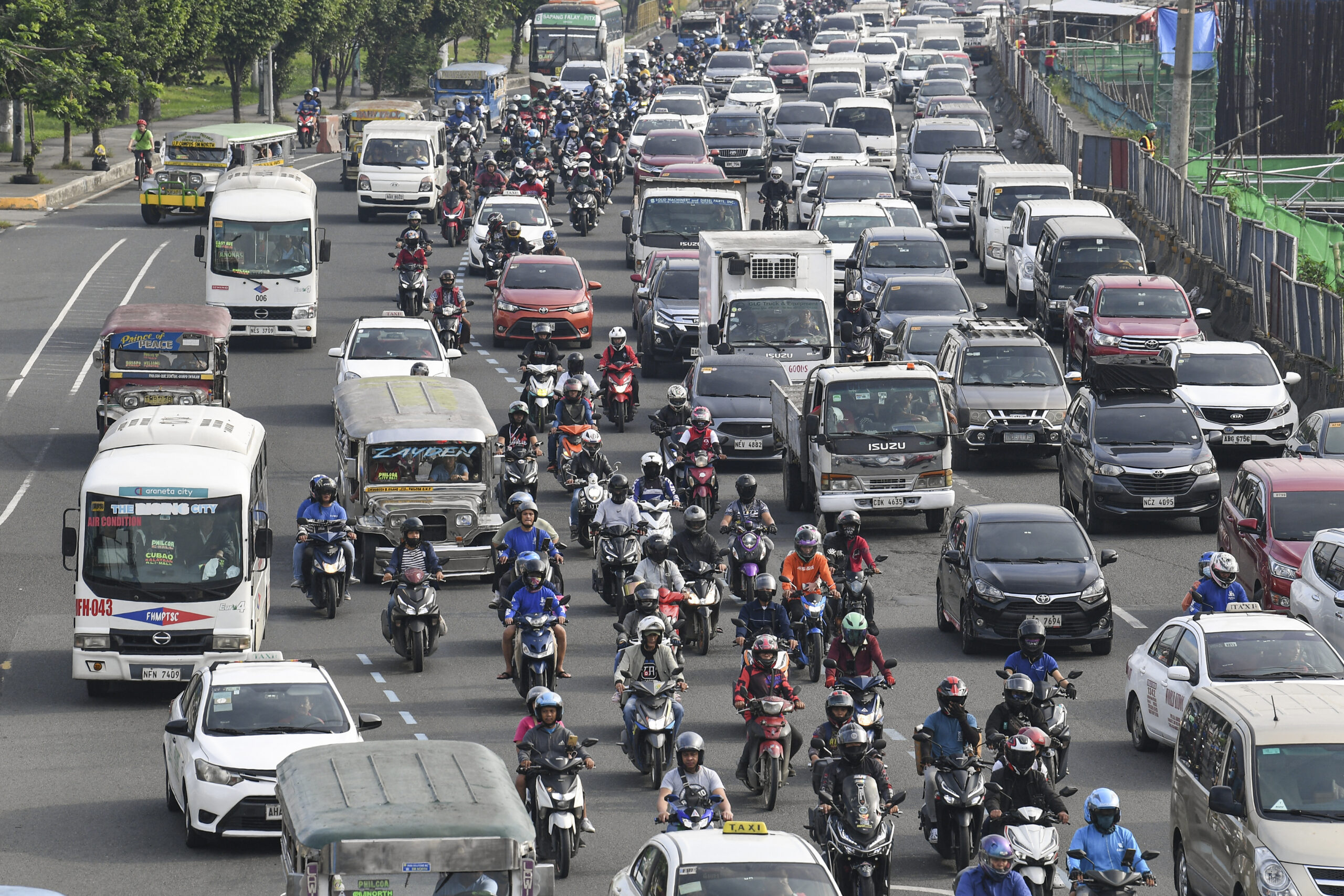PH car production grew 20% in February

Motorists and vehicles travel along a road amid traffic jam in Manila on November 24, 2023. (Photo by Ted ALJIBE / AFP)
MANILA, Philippines — Vehicle production in the Philippines grew by a fifth in February, outpacing most neighboring countries in Southeast Asia, as local assemblers scrambled to meet the postpandemic surge in demand for cars.
Data released on Monday by the Asean Automotive Federation (AAF), an umbrella group of industry associations across the Association of Southeast Asian Nations (Asean), showed that the Philippines had produced 11,608 vehicle units in February. This marked a 20.1-percent increase from the 9,662 units assembled in the same month in 2023.
Among six Asean economies in the AAF report, Myanmar posted the highest growth rate of 273.2 percent, although it also had the lowest production volume of 41 units.
The Philippines ranked second highest in terms of growth and third in volume. Toyota and Mitsubishi are the two brands with local production hubs.
Malaysia was in the third spot in terms of both growth and production volume as it increased output by 2.8 percent during the month with 65,611 units.
READ: Thai February car output drops 19.3% on EV imports
Thailand, Indonesia and Vietnam had lower production volumes, with their output declining by 19.3 percent, 20 percent, and 43.8 percent, respectively.
Postpandemic recovery
Despite the decline in production volume, Thailand and Indonesia were still the top two producers, with the former delivering 133,690 units and the latter producing 88,715 units.
READ: PH vehicle production grew 19.7% in 2023
Meanwhile, Vietnam assembled 7,282 units, ranking fourth and lagging behind the Philippines in terms of production volume.
In total, the six countries produced 317,059 new vehicles in February, marking a 15.6-percent decline.
Sought for comment, Rizal Commercial Banking Corp. chief economist Michael Ricafort told the Inquirer that the sustained double-digit growth in local vehicle production may still be attributed to the continued pick-up and recovery of many businesses and industries from the pandemic.
With the economy reopening toward greater normalcy, he added that there would be stronger demand for big-ticket items, such as vehicles, despite other economic headwinds.
“It is important to note that the sustained double-digit growth in vehicle sales is more than three times the country’s economic growth amid relatively strong employment data in recent months,” he said.
Robust car sales
Car sales in the country grew by 23.2 percent to 38,072 units in February, based on industry data.
READ: New vehicle sales seen to hit 500,000 in 2024
Lower downpayment schemes and the availability of more models—especially electric vehicles and hybrid vehicles—could have also contributed to the faster growth, Ricafort said.
Despite the growth in automotive production, all four Asean countries with assembly hubs for motorcycles and scooters recorded varying degrees of decline.
The Philippines saw a 9.5-percent drop in motorcycle production to 105,307 units while overall regional output fell by 11.5 percent to 322,873 units. INQ

